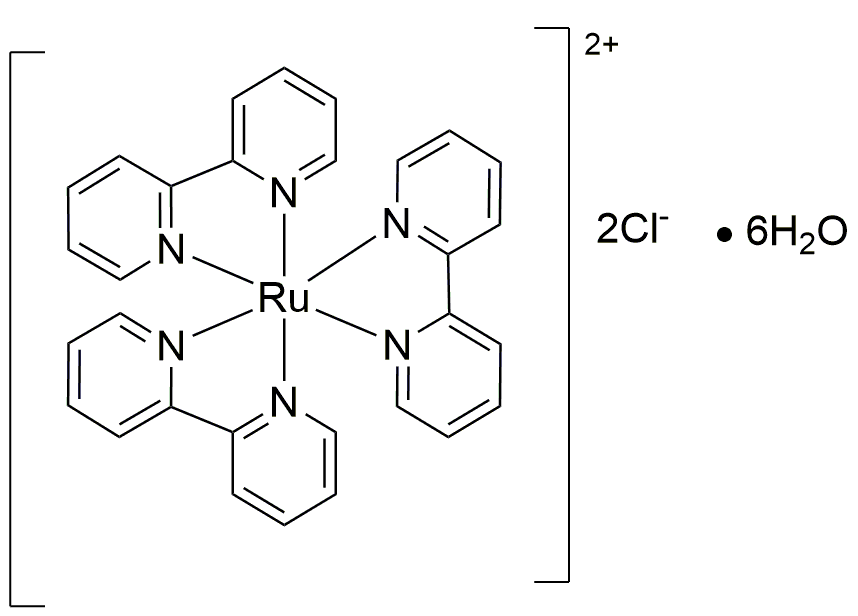Tris(2,2'-bipyridyl)ruthenium(II) chloride hexahydrate is widely utilized in research focused on:
- Photovoltaics: This compound is used in dye-sensitized solar cells, enhancing light absorption and energy conversion efficiency, making renewable energy more accessible.
- Chemical Sensors: Its electrochemical properties allow for the development of sensitive sensors for detecting various analytes, crucial in environmental monitoring and safety applications.
- Biological Research: It serves as a valuable tool in studying cellular processes, particularly in understanding cell signaling pathways and drug interactions, aiding in drug development.
- Photodynamic Therapy: The compound shows promise in cancer treatment by generating reactive oxygen species upon light activation, targeting and destroying cancer cells with minimal side effects.
- Coordination Chemistry: It is a key component in the synthesis of advanced materials, including catalysts and nanomaterials, which are essential in various industrial processes.
General Information
Properties
Safety and Regulations
Applications
Tris(2,2'-bipyridyl)ruthenium(II) chloride hexahydrate is widely utilized in research focused on:
- Photovoltaics: This compound is used in dye-sensitized solar cells, enhancing light absorption and energy conversion efficiency, making renewable energy more accessible.
- Chemical Sensors: Its electrochemical properties allow for the development of sensitive sensors for detecting various analytes, crucial in environmental monitoring and safety applications.
- Biological Research: It serves as a valuable tool in studying cellular processes, particularly in understanding cell signaling pathways and drug interactions, aiding in drug development.
- Photodynamic Therapy: The compound shows promise in cancer treatment by generating reactive oxygen species upon light activation, targeting and destroying cancer cells with minimal side effects.
- Coordination Chemistry: It is a key component in the synthesis of advanced materials, including catalysts and nanomaterials, which are essential in various industrial processes.
Documents
Safety Data Sheets (SDS)
The SDS provides comprehensive safety information on handling, storage, and disposal of the product.
Product Specification (PS)
The PS provides a comprehensive breakdown of the product’s properties, including chemical composition, physical state, purity, and storage requirements. It also details acceptable quality ranges and the product's intended applications.
Certificates of Analysis (COA)
Search for Certificates of Analysis (COA) by entering the products Lot Number. Lot and Batch Numbers can be found on a product’s label following the words ‘Lot’ or ‘Batch’.
Numéro de catalogue
Numéro de lot/série
Certificates Of Origin (COO)
This COO confirms the country where the product was manufactured, and also details the materials and components used in it and whether it is derived from natural, synthetic, or other specific sources. This certificate may be required for customs, trade, and regulatory compliance.
Numéro de catalogue
Numéro de lot/série
Safety Data Sheets (SDS)
The SDS provides comprehensive safety information on handling, storage, and disposal of the product.
DownloadProduct Specification (PS)
The PS provides a comprehensive breakdown of the product’s properties, including chemical composition, physical state, purity, and storage requirements. It also details acceptable quality ranges and the product's intended applications.
DownloadCertificates of Analysis (COA)
Search for Certificates of Analysis (COA) by entering the products Lot Number. Lot and Batch Numbers can be found on a product’s label following the words ‘Lot’ or ‘Batch’.
Numéro de catalogue
Numéro de lot/série
Certificates Of Origin (COO)
This COO confirms the country where the product was manufactured, and also details the materials and components used in it and whether it is derived from natural, synthetic, or other specific sources. This certificate may be required for customs, trade, and regulatory compliance.


